Configuring Custom Alerts: Strategies for Effective Market Monitoring
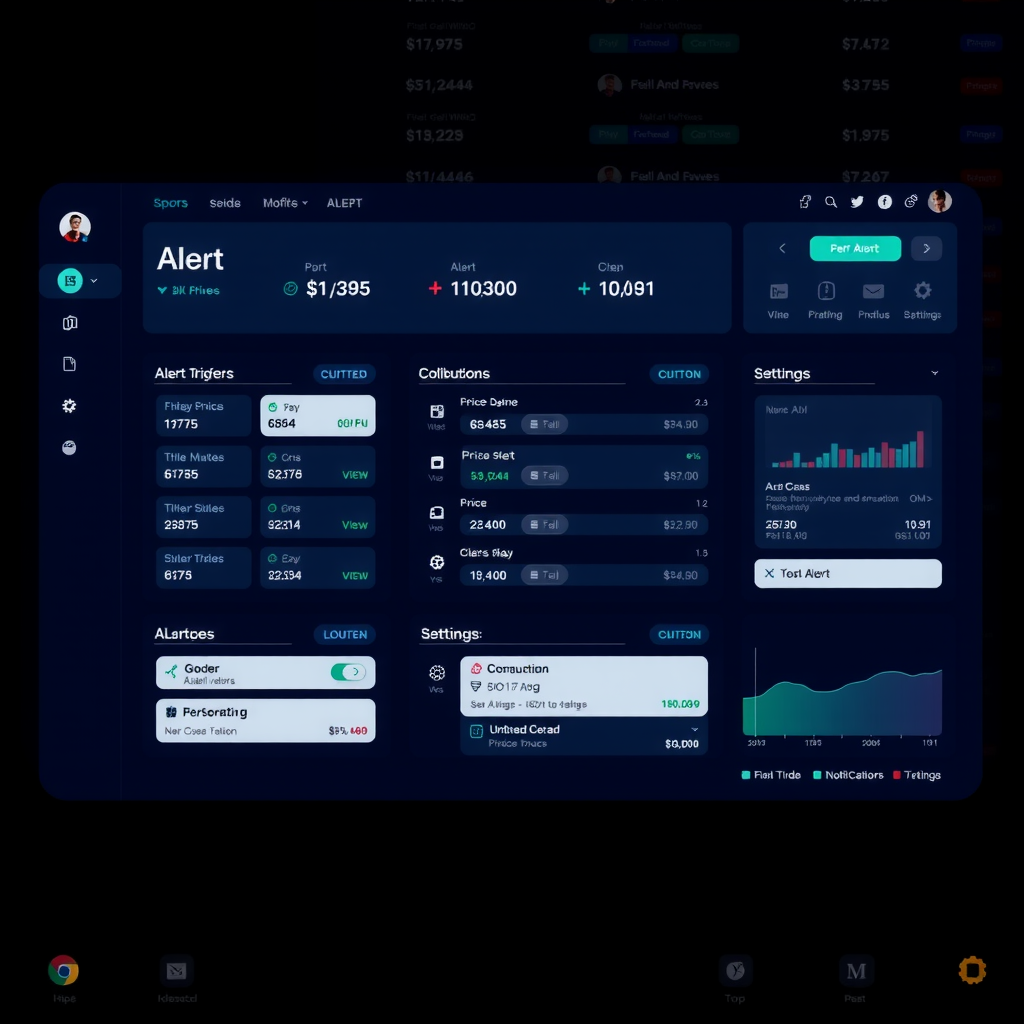
In today's fast-paced financial markets, staying informed without being overwhelmed is a critical challenge for traders and investors. Custom alert systems have become essential tools for effective market monitoring, enabling you to track important price movements, volume changes, and technical signals while maintaining focus on your trading strategy. This comprehensive guide explores how to configure intelligent alert systems that keep you informed at the right moments without drowning you in unnecessary notifications.
Understanding Alert System Fundamentals
Before diving into specific configuration strategies, it's important to understand the core components of an effective alert system. Modern TradingView chart monitoring platforms and similar tools offer sophisticated alert capabilities that go far beyond simple price notifications. A well-designed alert system serves as your digital assistant, continuously scanning markets and notifying you only when conditions match your predefined criteria.
The foundation of any alert system rests on three pillars: trigger conditions, notification methods, and priority levels. Trigger conditions define what market events will activate an alert, notification methods determine how you'll receive the information, and priority levels help you distinguish between critical alerts requiring immediate attention and informational updates that can wait.
Key Insight
Studies show that traders who use properly configured alert systems make 40% fewer impulsive decisions and maintain better focus on their trading plans compared to those who constantly monitor charts manually.
Price Alert Configuration Strategies
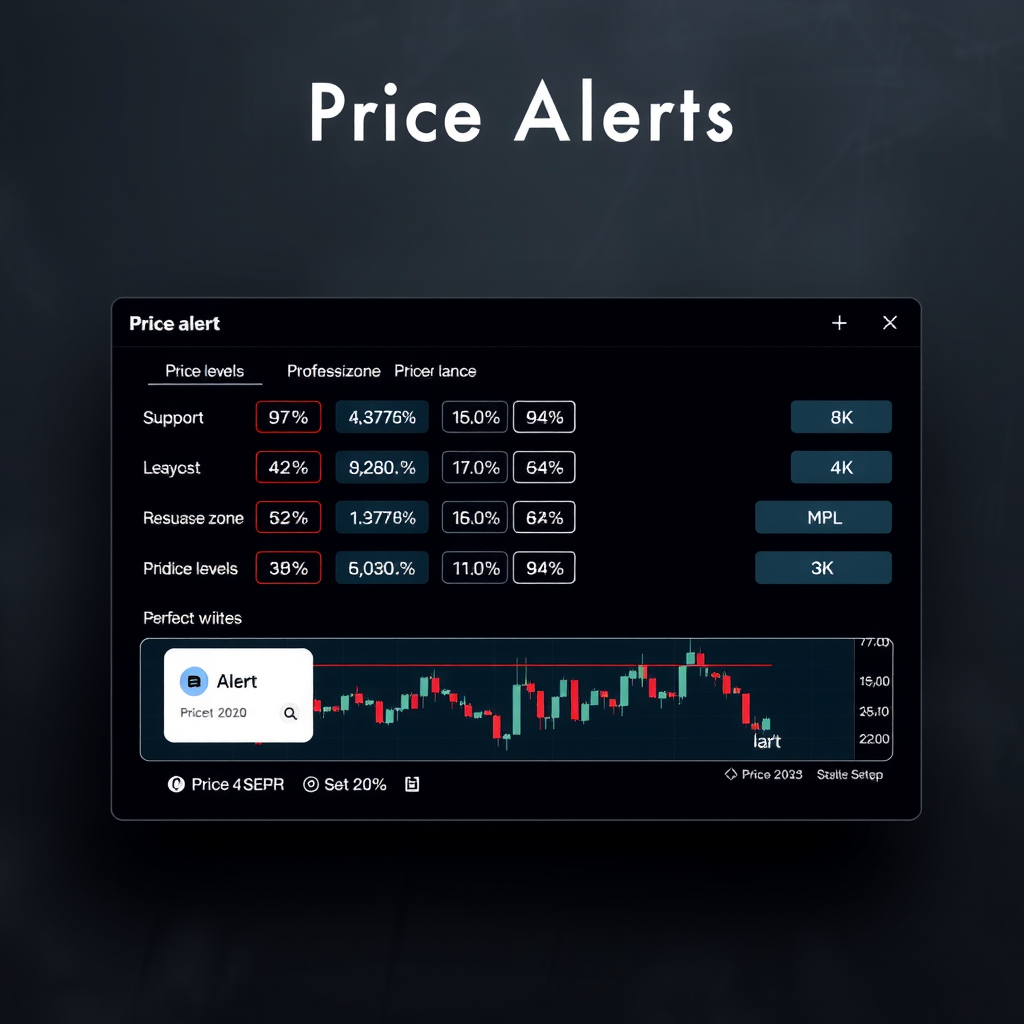
Price alerts form the backbone of most monitoring systems. Rather than setting alerts at arbitrary price points, successful traders use strategic placement based on technical analysis and market structure. Support and resistance levels, psychological price points, and Fibonacci retracement levels all serve as logical locations for price alerts.
Absolute vs. Percentage-Based Alerts
When configuring price alerts, you'll need to choose between absolute price levels and percentage-based movements. Absolute alerts trigger when an asset reaches a specific price point, making them ideal for key support and resistance levels. For example, setting an alert at $50,000 for Bitcoin provides a clear notification when that psychological level is tested.
Percentage-based alerts, on the other hand, trigger when an asset moves by a certain percentage from a reference point. These prove particularly useful for volatile assets where absolute price levels may be less meaningful than relative movements. A 5% move in either direction might signal a significant trend change worthy of your attention, regardless of the specific price level.
Multi-Timeframe Price Monitoring
Effective price alert systems incorporate multiple timeframes to provide context. A price alert on a 5-minute chart might indicate a short-term trading opportunity, while the same price level on a daily chart could signal a major trend reversal. Configure alerts across different timeframes to understand both immediate price action and longer-term market structure.
Consider setting up alert zones rather than single price points. Instead of one alert at $50,000, create a zone between $49,800 and $50,200. This approach accounts for price volatility and reduces false signals from brief price spikes that don't represent genuine market moves.
Volume-Based Alert Configuration
Volume alerts provide crucial context to price movements, helping you distinguish between meaningful trends and low-conviction moves. Unusual volume often precedes significant price changes, making volume-based alerts an essential component of comprehensive market monitoring.
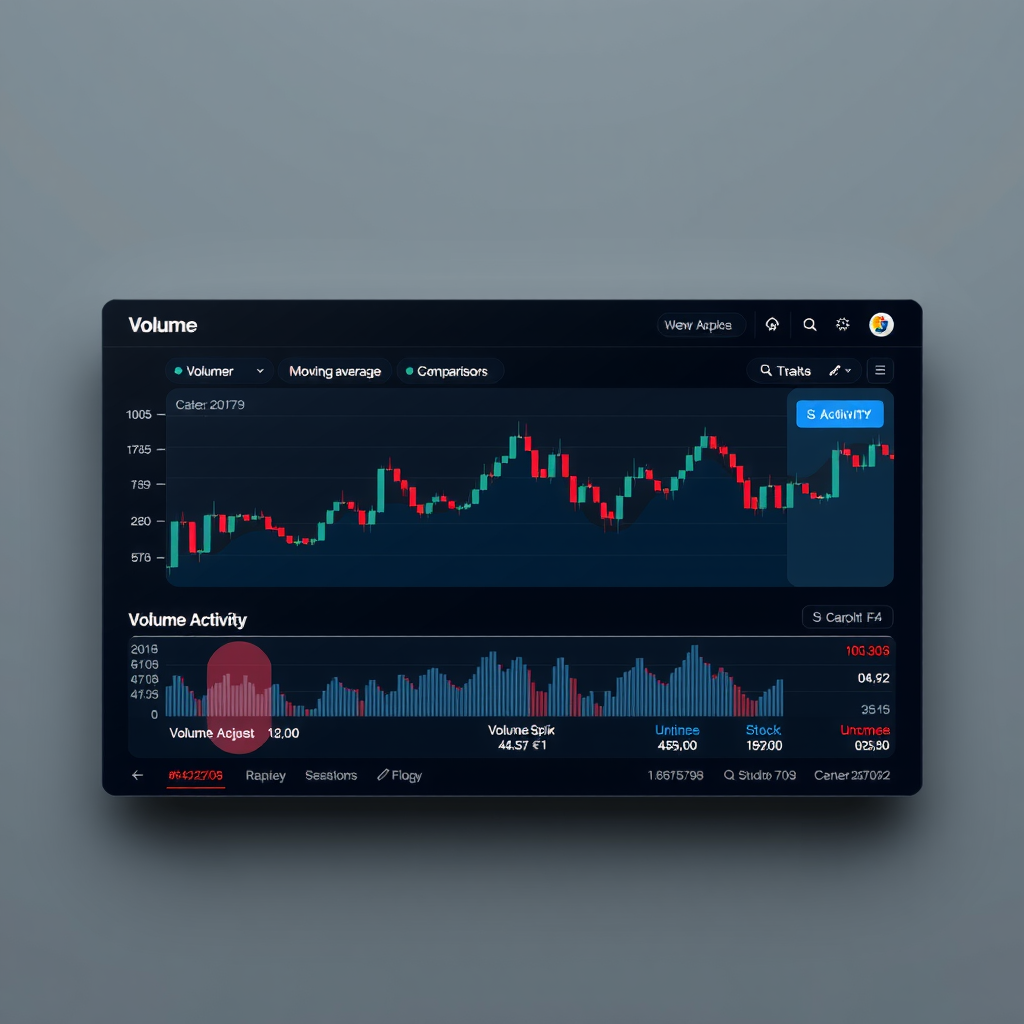
Relative Volume Alerts
Rather than monitoring absolute volume numbers, which vary significantly across different assets and timeframes, focus on relative volume comparisons. Set alerts for when current volume exceeds the average volume by a specific multiple. For instance, an alert triggering when volume reaches 2x or 3x the 20-period average can signal increased market interest and potential significant moves.
Volume profile alerts add another dimension to your monitoring system. These alerts trigger when significant volume accumulates at specific price levels, indicating areas of strong support or resistance. When price returns to these high-volume nodes, you'll receive notifications about potentially important price interactions.
Volume Divergence Detection
Configure alerts to identify volume divergences, where price makes new highs or lows but volume decreases. These divergences often signal weakening trends and potential reversals. Advanced TradingView review platforms allow you to create custom indicators that automatically detect these patterns and trigger alerts when specific divergence conditions are met.
Technical Indicator Alert Systems
Technical indicators provide objective signals based on mathematical calculations of price and volume data. Properly configured indicator alerts can identify trend changes, momentum shifts, and potential entry or exit points without requiring constant chart monitoring.
Moving Average Crossover Alerts
Moving average crossovers remain among the most popular technical signals for good reason—they provide clear, objective trend change notifications. Configure alerts for when faster moving averages cross above or below slower ones. The classic 50-day and 200-day moving average crossover, known as the "golden cross" or "death cross," can be set up to notify you of major trend changes in your monitored assets.
Don't limit yourself to traditional moving average periods. Experiment with different combinations that align with your trading timeframe. Day traders might use 9-period and 21-period exponential moving averages, while swing traders could focus on 20-period and 50-period simple moving averages. Test various combinations to find what works best for your strategy and the assets you trade.
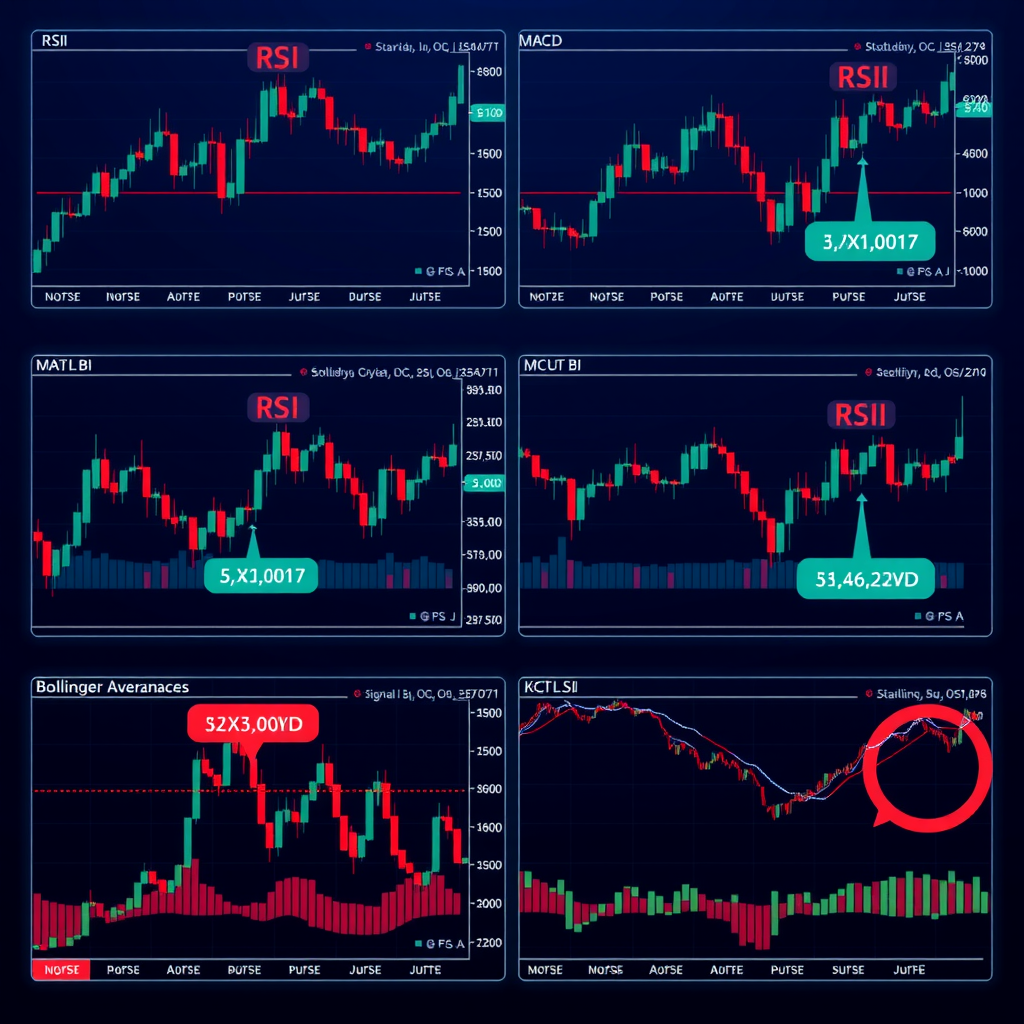
Momentum Indicator Alerts
Momentum indicators like the Relative Strength Index (RSI), Stochastic Oscillator, and MACD provide valuable overbought and oversold signals. Configure alerts for when RSI crosses above 70 (overbought) or below 30 (oversold), but also consider more nuanced configurations. For example, set alerts for when RSI crosses back below 70 after being overbought, potentially signaling the start of a correction.
MACD alerts can be configured for multiple conditions: histogram crossovers, signal line crossovers, and divergences. Each provides different information about momentum and trend strength. A MACD histogram crossing above zero might trigger an alert for potential bullish momentum, while a bearish divergence between MACD and price could warn of weakening uptrends.
Volatility-Based Alerts
Bollinger Bands and Average True Range (ATR) provide excellent foundations for volatility alerts. Set notifications for when price touches or breaks through Bollinger Bands, indicating potential overextension. ATR alerts can notify you when volatility expands or contracts significantly, helping you adjust position sizing and risk management accordingly.
Volatility expansion often precedes significant price moves, making these alerts particularly valuable for identifying potential trading opportunities. Configure alerts for when ATR increases by a certain percentage or crosses above its own moving average, signaling a shift from quiet to active market conditions.
Pro Tip
Combine multiple indicator alerts to create confirmation systems. For example, require both RSI oversold conditions AND a bullish MACD crossover before receiving an alert. This reduces false signals and improves alert quality.
News and Event-Based Alert Configuration
Market-moving news and scheduled events can trigger significant price movements. Integrating news-based alerts into your monitoring system ensures you're aware of fundamental catalysts that might affect your positions or create new opportunities.
Economic Calendar Integration
Configure alerts for scheduled economic releases that impact your traded markets. Interest rate decisions, employment reports, GDP releases, and inflation data can all trigger significant volatility. Set alerts to notify you 15-30 minutes before major releases, giving you time to review positions and adjust risk if necessary.
Not all economic releases carry equal weight. Prioritize alerts for high-impact events relevant to your markets. A forex trader needs alerts for central bank decisions and employment data, while a stock trader might focus on earnings season and sector-specific reports. Customize your economic calendar alerts to match your trading focus.
Breaking News Alerts
Real-time news alerts help you respond quickly to unexpected market-moving events. Configure keyword-based alerts for specific companies, sectors, or market themes relevant to your portfolio. When news containing your keywords appears, you'll receive immediate notification, allowing you to assess potential impacts on your positions.
Be selective with news alert keywords to avoid notification overload. Focus on truly significant terms like "merger," "acquisition," "bankruptcy," "regulatory action," or company-specific keywords for your holdings. Too many generic news alerts will dilute the effectiveness of your monitoring system.
Advanced Alert Filtering and Prioritization
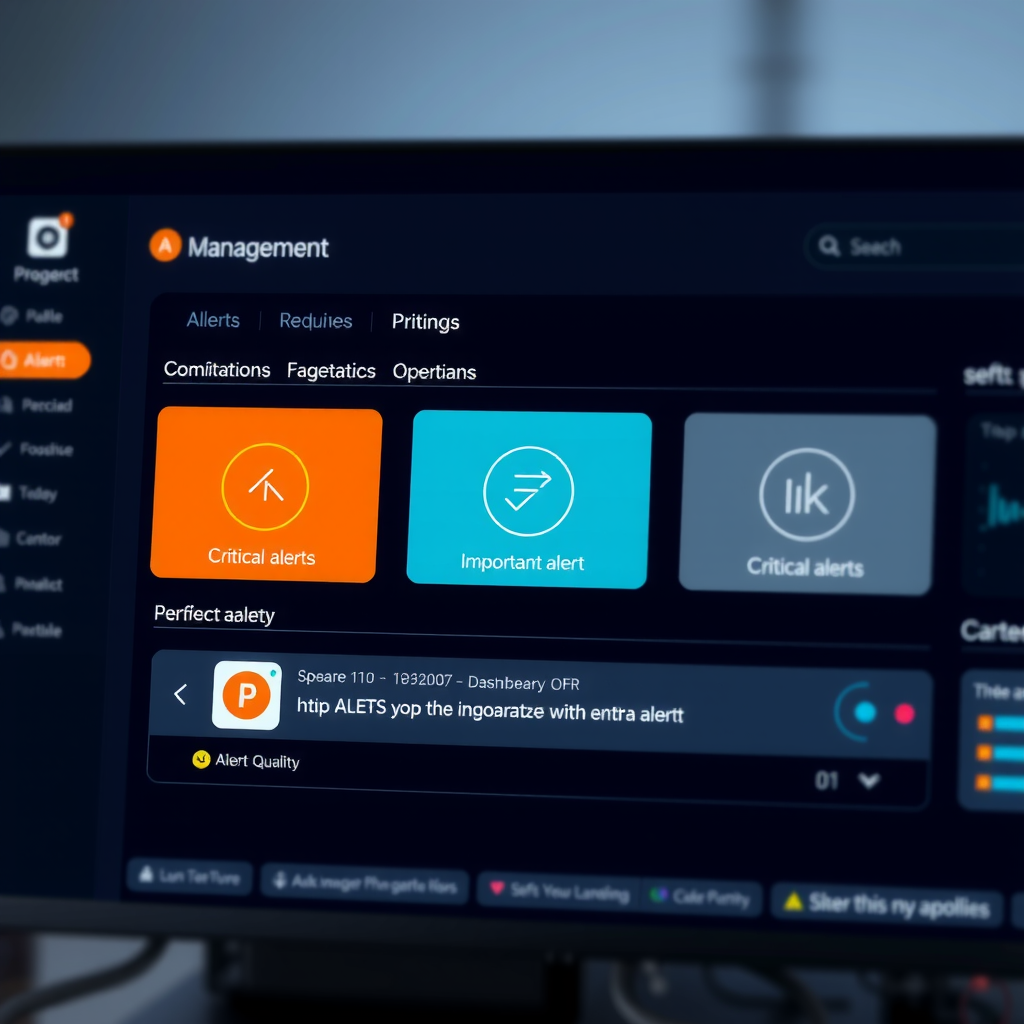
As your monitoring system grows more sophisticated, effective filtering and prioritization become essential. Without proper organization, even well-configured alerts can overwhelm you with notifications, defeating the purpose of automated monitoring.
Three-Tier Priority System
Implement a three-tier priority system for your alerts: critical, important, and informational. Critical alerts require immediate attention and might include stop-loss triggers, major support/resistance breaks, or significant news affecting open positions. These should use the most intrusive notification methods—push notifications, SMS, or even phone calls.
Important alerts deserve timely attention but don't require immediate action. These might include technical indicator signals, volume anomalies, or scheduled economic releases. Email notifications or less intrusive push notifications work well for this tier.
Informational alerts provide useful context but can be reviewed at your convenience. Price reaching watchlist levels, minor news updates, or end-of-day summaries fall into this category. These can be delivered via email digests or in-app notifications that don't interrupt your workflow.
Time-Based Alert Filtering
Configure different alert behaviors based on time of day and market conditions. During active trading hours, you might want immediate notifications for all priority levels. Outside market hours or during your designated off-times, filter alerts to only critical issues or queue non-urgent notifications for batch delivery.
Consider implementing "quiet hours" where only the most critical alerts break through. This prevents alert fatigue and ensures you maintain work-life balance while still staying protected against major adverse moves in your positions.
Conditional Alert Chains
Advanced alert systems support conditional chains where one alert triggers only if previous conditions are met. For example, configure a volume alert to trigger only if price also breaks above a key resistance level. This multi-condition approach dramatically reduces false signals and improves alert relevance.
Create alert sequences that adapt to market conditions. An initial alert might notify you of a potential setup, while subsequent alerts track the development of that setup. If the setup fails, the alert chain cancels automatically. If it succeeds, you receive progressive notifications as the trade develops.
Multi-Platform Alert Integration
Modern traders use multiple devices and platforms throughout their day. Effective alert systems integrate seamlessly across all your devices and communication channels, ensuring you receive important notifications regardless of where you are or what you're doing.
Mobile Device Configuration
Configure your mobile devices to receive alerts through dedicated trading apps, ensuring notifications appear even when you're away from your computer. Most professional platforms offer mobile apps with full alert functionality, allowing you to monitor markets and respond to opportunities from anywhere.
Customize mobile notification settings carefully. Use different notification sounds or vibration patterns for different alert priorities, allowing you to assess urgency without looking at your device. Enable lock screen notifications for critical alerts while keeping less important ones in the notification center.
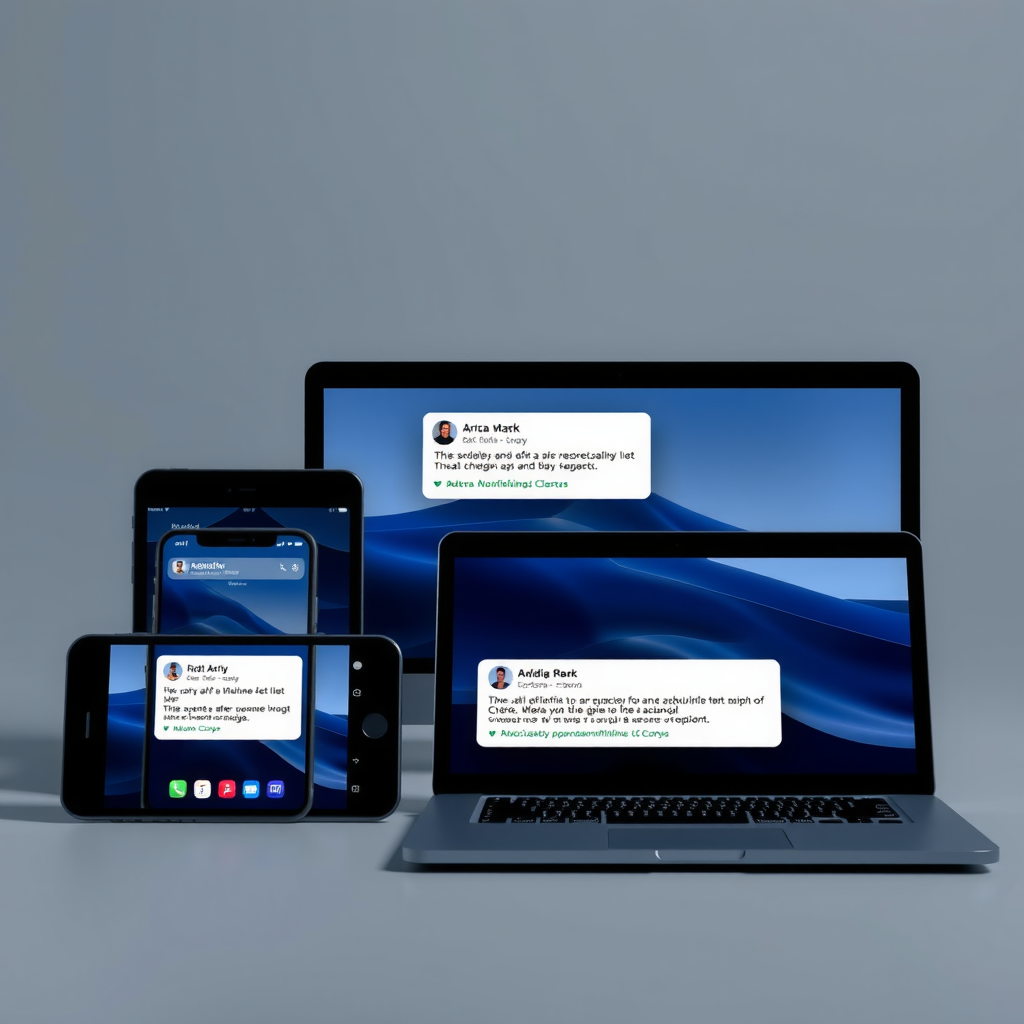
Email and SMS Integration
Email alerts provide detailed information and create a searchable archive of market events. Configure email alerts to include relevant chart snapshots, current price data, and context about why the alert triggered. This documentation proves valuable for reviewing your decision-making process and refining your alert criteria over time.
SMS alerts work best for critical notifications requiring immediate attention. The character limit forces concise, actionable information. Reserve SMS for your highest-priority alerts to avoid message overload and potential carrier restrictions on message volume.
Communication Platform Integration
Many traders integrate alerts with communication platforms like Telegram, Discord, or Slack. These platforms offer advantages including group sharing of alerts, bot integration for automated responses, and rich formatting options for detailed alert information. Create dedicated channels for different alert types or priority levels to maintain organization.
Webhook integration allows you to connect your alert system to virtually any service or custom application. This advanced feature enables sophisticated workflows like automatically logging alerts to spreadsheets, triggering automated trading systems, or integrating with portfolio management tools.
Alert System Maintenance and Optimization
Creating an effective alert system isn't a one-time task. Regular maintenance and optimization ensure your alerts remain relevant and effective as market conditions change and your trading strategy evolves.
Regular Alert Audits
Schedule monthly reviews of your alert system performance. Track metrics like alert frequency, false signal rate, and actionable alert percentage. If you're receiving too many alerts that don't lead to action, tighten your criteria. If you're missing important moves, consider expanding your alert coverage or adjusting sensitivity.
Document which alerts led to profitable trades and which generated false signals. This data-driven approach helps you refine your alert criteria over time, gradually improving the signal-to-noise ratio of your monitoring system.
Seasonal and Market Condition Adjustments
Market behavior changes with seasons, economic cycles, and volatility regimes. Alert criteria that work well in trending markets might generate excessive false signals in ranging conditions. Develop different alert profiles for different market environments and switch between them as conditions change.
Volatility-adjusted alerts automatically adapt to changing market conditions. Instead of fixed price or percentage thresholds, use ATR-based or standard deviation-based criteria that scale with current volatility levels. This approach maintains consistent alert sensitivity across different market regimes.
Alert Fatigue Prevention
Alert fatigue—the tendency to ignore or dismiss alerts due to overexposure—represents a serious risk to effective monitoring. Combat fatigue by ruthlessly eliminating low-value alerts, implementing proper prioritization, and using varied notification methods to maintain attention.
Consider implementing alert cooldown periods where repeated alerts for the same condition are suppressed for a specified time. This prevents notification spam when price oscillates around an alert level while still ensuring you're informed of the initial trigger.
Important Reminder
The best alert system is one you actually use. Start simple with a few high-priority alerts and gradually expand as you become comfortable with the system. Complexity without purpose leads to abandonment.
Building Your Personalized Alert Strategy
Every trader's ideal alert system looks different, reflecting individual trading styles, time availability, and risk tolerance. Building your personalized strategy requires understanding your specific needs and constraints.
Defining Your Monitoring Objectives
Start by clearly defining what you need to monitor and why. Day traders require real-time alerts for short-term price movements and volume spikes. Swing traders focus on daily timeframe signals and major support/resistance tests. Long-term investors might only need alerts for significant fundamental changes or major technical breakouts.
Your monitoring objectives should align with your trading plan. If your strategy involves buying pullbacks in uptrends, configure alerts for when price approaches key moving averages or support levels in trending markets. If you trade breakouts, focus alerts on price approaching consolidation boundaries with increasing volume.
Balancing Coverage and Manageability
More alerts don't necessarily mean better monitoring. Focus on quality over quantity, ensuring each alert serves a specific purpose in your trading process. A focused system monitoring 10-15 key setups across your watchlist often proves more effective than a sprawling system attempting to track every possible signal across hundreds of instruments.
Consider your available time and attention. If you can only check alerts a few times daily, configure fewer, higher-priority alerts that truly require action. If you're actively monitoring markets throughout the day, you can handle more frequent, lower-priority notifications providing additional context and opportunities.
Testing and Iteration
Treat your alert system as a living tool that evolves with your experience. Start with a basic configuration and track its performance over several weeks. Note which alerts proved valuable and which generated noise. Gradually refine your criteria, adding new alerts for missed opportunities and removing or adjusting those that underperformed.
Use paper trading or simulation to test new alert configurations before implementing them in your live trading system. This allows you to evaluate alert effectiveness without risking capital or cluttering your primary monitoring system with unproven criteria.
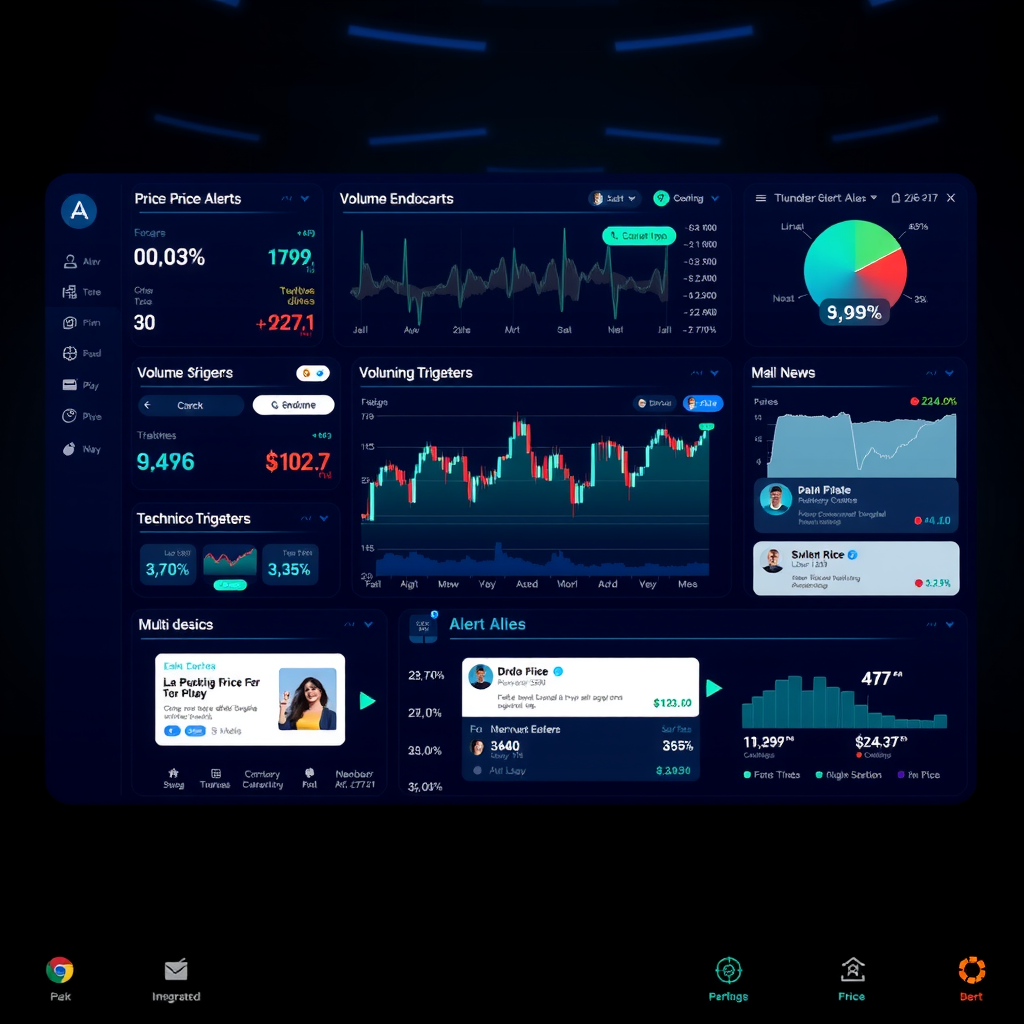
Conclusion: Mastering Market Monitoring
Effective market monitoring through well-configured alert systems represents a significant competitive advantage in modern trading. By implementing the strategies outlined in this guide—from basic price alerts to sophisticated multi-condition systems—you can stay informed of important market developments without sacrificing your time or mental energy to constant chart watching.
Remember that the goal isn't to create the most complex alert system possible, but rather to build a monitoring framework that serves your specific trading objectives while remaining manageable and sustainable. Start with fundamental alerts covering your core monitoring needs, then gradually expand and refine based on experience and results.
The most successful traders view their alert systems as essential tools that free them to focus on analysis, strategy development, and execution rather than mechanical monitoring tasks. By investing time in proper alert configuration and maintenance, you create a reliable digital assistant that works tirelessly to keep you informed of opportunities and risks across your markets.
As you implement these alert strategies, maintain flexibility and willingness to adapt. Market conditions change, your trading style evolves, and new monitoring technologies emerge. Regular review and optimization of your alert system ensures it continues serving your needs effectively, helping you maintain the awareness and responsiveness required for successful trading in dynamic financial markets.
With a properly configured alert system in place, you gain the confidence to step away from your screens knowing that important market developments won't go unnoticed. This peace of mind, combined with timely notifications of genuine opportunities, creates the foundation for disciplined, informed trading decisions that align with your strategic objectives.